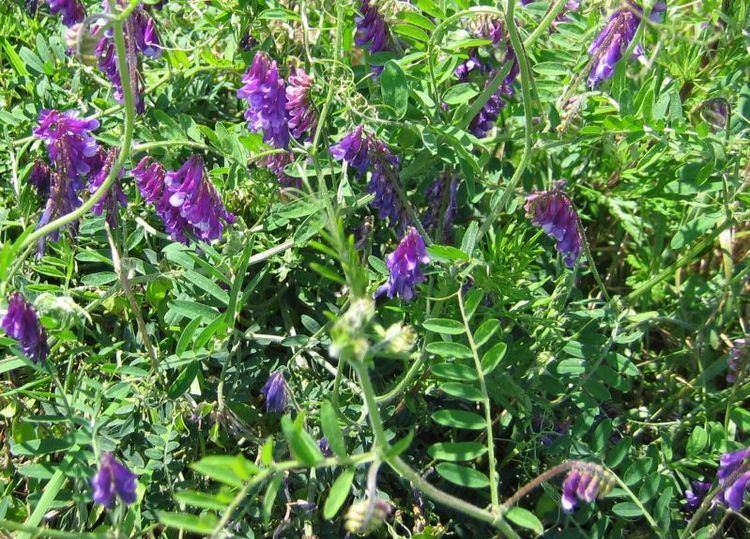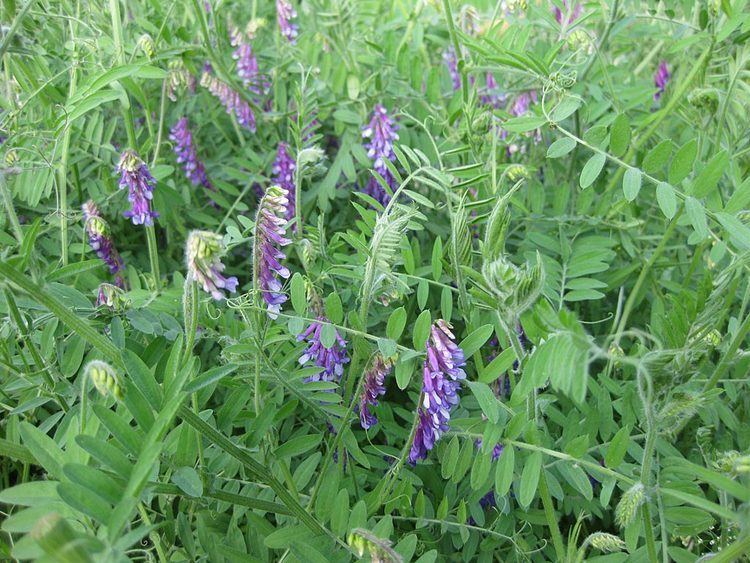Tribe Vicieae Rank Species | Genus Vicia Higher classification Vetches | |
 | ||
Similar Vetches, Common Vetch, Trifolium incarnatum, Vicia cracca, Legumes | ||
Vicia villosa, known as the hairy vetch, fodder vetch or winter vetch, is a plant native to Europe and western Asia. It is a legume, grown as a forage crop, fodder crop, cover crop, and green manure.
Contents
Hairy vetch is very similar to tufted vetch (Vicia cracca), the most noticeable difference being that tufted vetch has a smooth stem.

Several subspecies are recognized:

The species Vicia hirsuta is also called hairy vetch.
Cultivation
Hairy vetch is widely used by organic growers in the United States as a winter cover crop and in no-till farming, as it is both winter hardy and can fix as much as 200 lb/acre of atmospheric nitrogen. Disadvantages of hairy vetch in production agriculture are related to the crop having a portion of hard seed and its tendency to shatter seed early in the season - leading to it remaining in the field as a weed later in the season. This can be a particular problem in wheat production.
Companion plant
Organic gardeners often plant hairy vetch (a nitrogen-fixing legume) as a companion plant to tomatoes, as an alternative to rotating crops in small growing areas. When it is time to plant tomatoes in the spring, the hairy vetch is cut to the ground and the tomato seedlings are planted in holes dug through the matted residue and stubble. The vetch vegetation provides both nitrogen and an instant mulch that preserves moisture and keeps weeds from sprouting.
